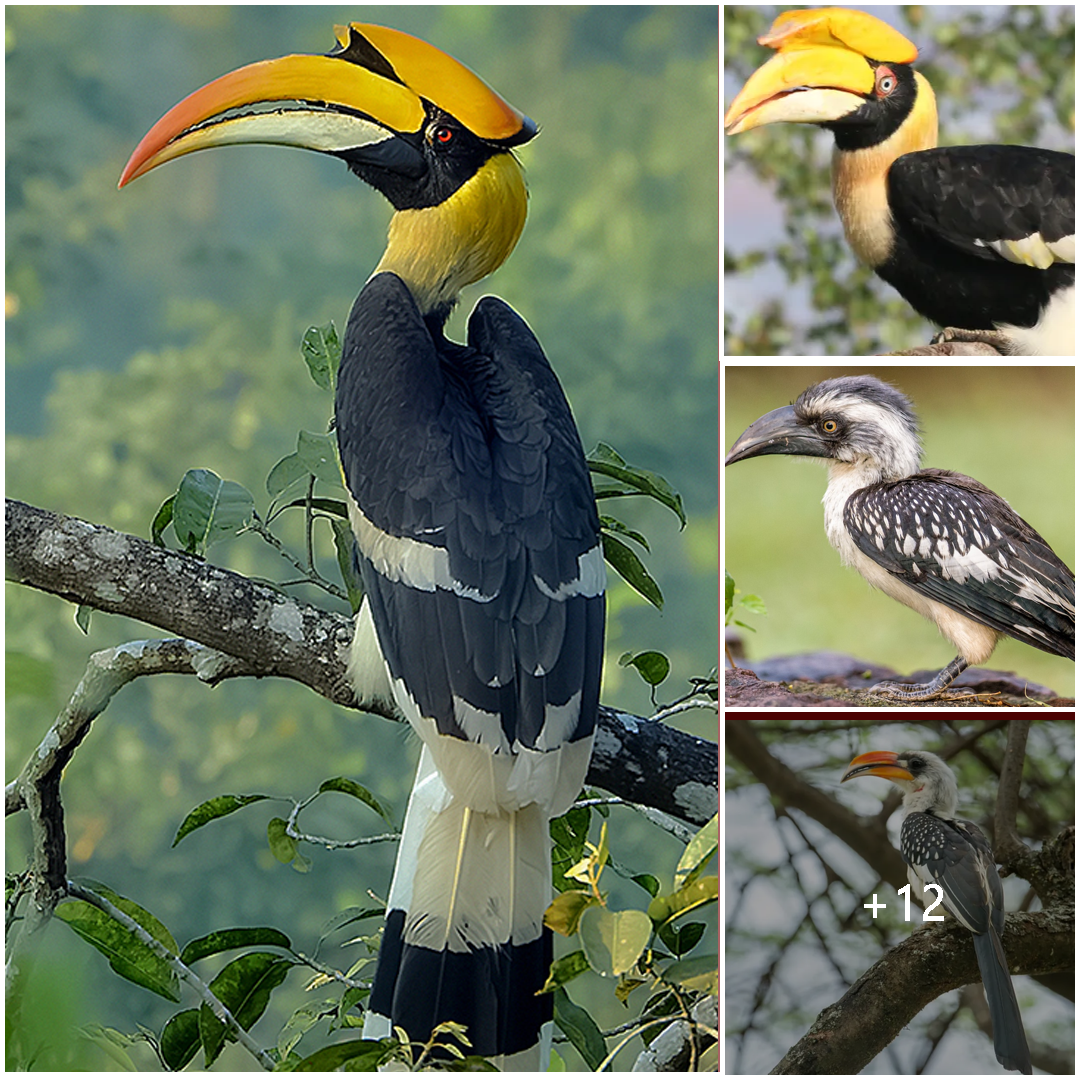 Hornbills are a group of majestic and iconic birds known for their striking appearance, impressive size, and unique nesting behaviors. Belonging to the family Bucerotidae, these avian wonders are found across the tropical regions of Africa, Asia, and Melanesia. Let’s delve into the fascinating world of hornbills and uncover the remarkable traits that make them stand out among the avian species.
Hornbills are a group of majestic and iconic birds known for their striking appearance, impressive size, and unique nesting behaviors. Belonging to the family Bucerotidae, these avian wonders are found across the tropical regions of Africa, Asia, and Melanesia. Let’s delve into the fascinating world of hornbills and uncover the remarkable traits that make them stand out among the avian species.
Physical Characteristics: Hornbills are characterized by their large, brightly colored bills adorned with unique casques or protuberances. These bills vary in size and shape among different species, ranging from slender and curved to large and robust. Their plumage is often vibrant and eye-catching, with combinations of black, white, red, yellow, and orange hues. Most hornbills have long tails and broad wings, enabling them to navigate through the dense forests where they reside.
Habitat and Distribution: Hornbills are predominantly found in tropical and subtropical forests, including rainforests, woodlands, and mangrove swamps. They are distributed across Africa, South Asia, Southeast Asia, and Melanesia, with various species occupying specific geographical ranges. Hornbills are typically associated with dense vegetation and rely on forested habitats for nesting, foraging, and roosting.
Behavior and Diet: One of the most notable behaviors of hornbills is their unique nesting habits. Many species exhibit cavity-nesting behavior, where they utilize natural tree hollows or excavate nest cavities in decaying wood. The female hornbill seals herself inside the nest cavity during the incubation period, relying on the male to bring her food through a small opening. This remarkable adaptation provides protection for the female and her chicks against predators.
Hornbills are omnivorous birds with a diverse diet that includes fruits, insects, small mammals, reptiles, and occasionally other birds’ eggs. They play an important ecological role as seed dispersers, helping to maintain the health and diversity of forest ecosystems by spreading seeds over wide areas.
Breeding and Reproduction: Breeding in hornbills typically occurs during the dry season when food resources are abundant. Courtship displays involve elaborate aerial flights, vocalizations, and bill duels between males to establish dominance and attract mates. After mating, the female seals herself inside the nest cavity using mud, droppings, and regurgitated food, leaving only a narrow slit through which the male can pass food. Incubation periods can last several weeks, depending on the species, and both parents participate in feeding and caring for the chicks once they hatch.
Conservation Status: Several species of hornbills are facing threats due to habitat loss, deforestation, hunting, and illegal wildlife trade. The destruction of forested habitats for agriculture, logging, and infrastructure development poses significant challenges to hornbill populations. Conservation efforts focused on habitat protection, anti-poaching measures, community engagement, and captive breeding programs are crucial for the conservation of hornbills and their ecosystems.
In conclusion, hornbills are not only magnificent symbols of the tropical forests they inhabit but also integral components of these diverse ecosystems. With their striking appearance, unique nesting behaviors, and ecological importance, hornbills capture the imagination of bird enthusiasts and conservationists alike. As we strive to protect and preserve these magnificent birds and their habitats, we contribute to the conservation of biodiversity and the sustainable management of our planet’s natural resources.





